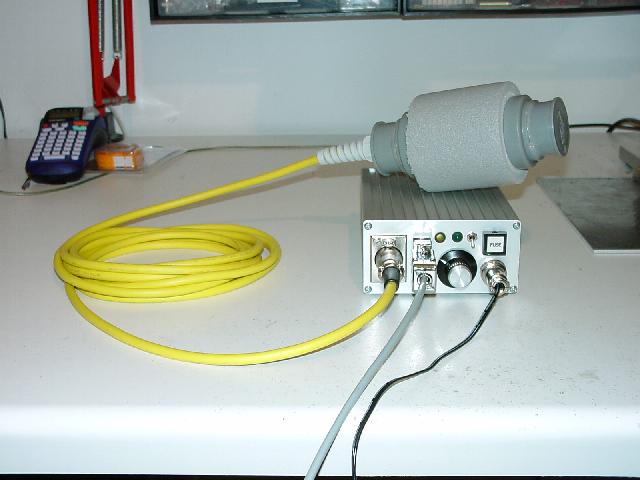
|
After building quite a few seismometers I started to wonder about measuring variations in earth's magnetic field. After thinking about the construction of a proton resonance magnetometer (and some experiments in this direction) it became clear that the simplest way would be to use a commercially available sensor like the FGM-3h-sensor manufactured by Speake & Co. Firs Rouad, Llanfaplay, Abergaenny, Monmouthshire, NP7 8SL, United Kingdom. This sensor is a very sensitive flux gate magnetometer capable of a resolution in the nT range. In fact, it is so sensitive that it can not be used in north-south direction since the magnetic field of the earth is too strong in this direction. On the left the complete magnetometer system based on the FGM-3h can be seen. The sensor is housed in the plastic pipe sitting on top of the small case holding the microcontroller and counter circuitry. |
|
Since the FGM-3h generates a TTL compatible output signal which is frequency correlated to the measured magnetic field, its conncetion to homebrew hardware is as simple as possible. All what is needed is a couple of counters and a microcontroller to read out the counters in fixed intervals and sending the data over a serial line to a computer which does the actual data gathering. On the right the controller circuit board during its development can be seen. The large chip on the far right is a 68HC11 microcontroller which controls the three TTL counters 74LS593 located on top of the board. The rest of the circuitry consists of a MAX232 RS-232 driver and some glue logic. |
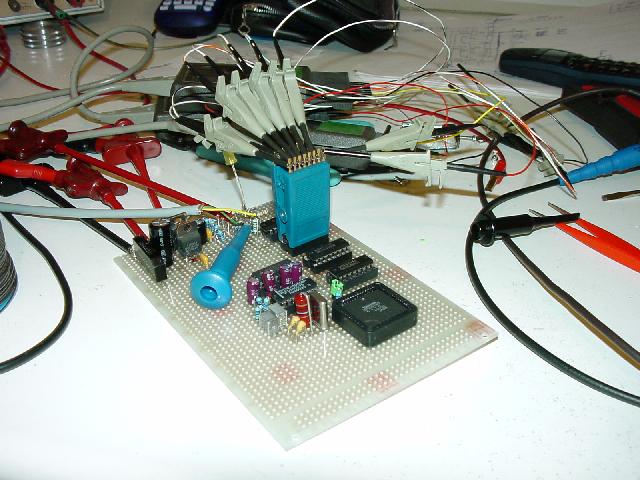
|
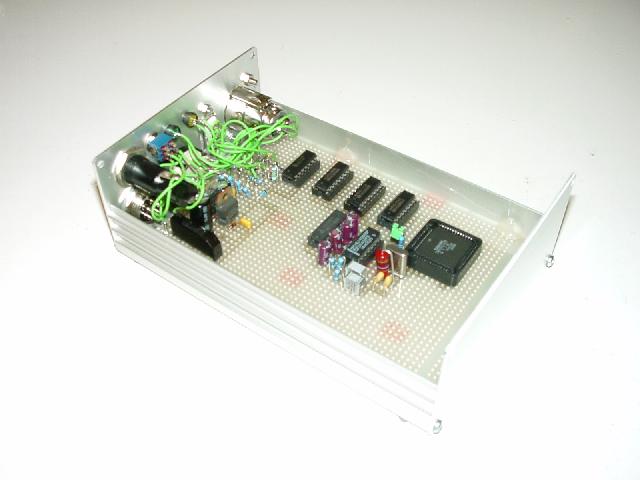
|
The inside of the controller case can be seen in the picture on the left. The front panel of the case holds all necessary connectors for power, the sensor itself, the serial line as well as a rotary switch which is used to control the sample rate (the time interval between two successive readouts of the three 8 bit counters). |
|
Since the FGM-3h sensor is a very delicate device and very sensitive for even the smallest variations of the surrounding magnetic field, it is separated from the readout electronics and has its own voltage stabilizer mounted as near to the sensor as possible. On the right the sensor without its enclosure can be seen - next to the sensor a voltage regulator 7805 is mounted which is fed by a prestabilized 12V supply voltage from the counter circuitry. |
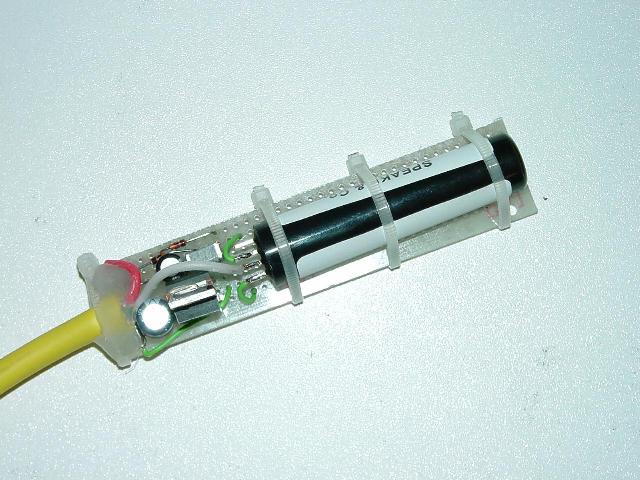
|

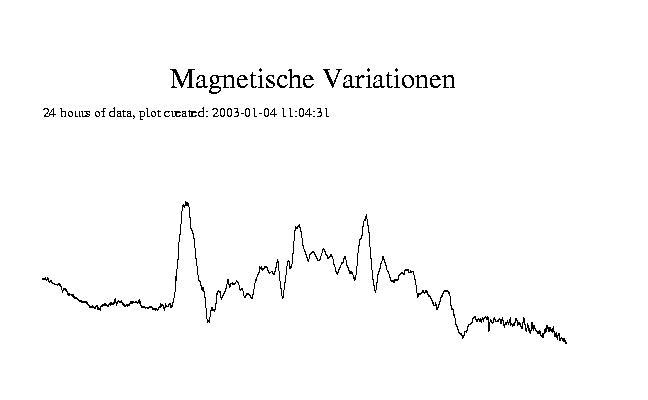
|
A very impressive example of the sensitivity of the FGM-3h based flux gate magnetometer is shown on the left. Both pictures show the magnetic variations in the time interval from 03-JAN-2003 to 04-JAN-2003 - the upper picture is from the magnetic observatory in wingst (actual graphs from Wingst may be seen here) while the lower picture shows the readings from my magnetometer located in my garden in east-west direction. The very slow drift in the lower curve is due to temperature variations during the day and night. Since the FGM-3h is quite sensitive for temperature changes it should be very well insulated and buried as deep as possible in the ground - far away from all sources of disturbances. Current plots from my instrument may be seen here. |